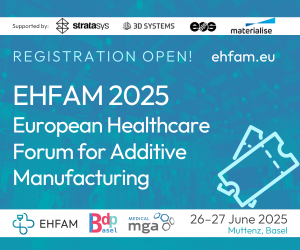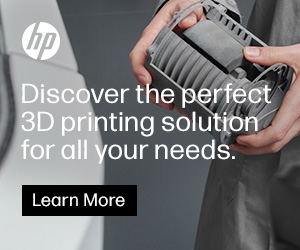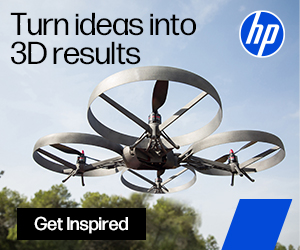3D Tech Helps Abu Dhabi Doctors Tackle Rare Heart Case
Surgeons in Abu Dhabi turned to 3D printing to tackle a rare heart defect so unusual that it’s found in just 0.03% of people—saving a life in the process. Mian Mohamed Shabbie, a 41-year-old patient, faced a life-threatening challenge with a rare congenital heart condition. His aorta, the main artery that carries blood from the heart, took an unusual path, arching to the right instead of the left—a defect he was born with. To make matters worse, this defect led to the development of a giant aneurysm known as Kommerell’s diverticulum.
Located near the aortic arch, where major blood vessels are tightly packed, this type of aneurysm poses a significant challenge for surgeons because it is difficult to access and treat without risking serious complications.
Faced with this complex and rare case, the surgical team at Cleveland Clinic Abu Dhabi, in collaboration with New York University (NYU) Abu Dhabi, turned to 3D printing technology for help. They created a detailed, 3D printed model of Shabbie’s heart, allowing them to visualize and understand the unique structure of his condition before stepping into the operating room (OR).
Explaining the case, Houssam Younes, a vascular surgeon at Cleveland Clinic Abu Dhabi said that “due to its asymptomatic nature or presentation with symptoms commonly associated with other conditions, these congenital deformities are infrequently detected, calling for a high level of physician and technological expertise during surgical interventions.”
In Shabbie’s case, the aorta arching to the right instead of the left complicated the surgical approach even more. To make the surgery even riskier, Kommerell’s diverticulum can potentially burst or press on nearby structures, like the windpipe or esophagus, causing life-threatening complications.
Cardiac surgeon Yazan Aljabery, also of the Heart, Vascular & Thoracic Institute at Cleveland Clinic Abu Dhabi, explained that “correcting a case of Kommerell’s diverticulum when the aorta arches left, as is typical, is relatively straightforward because the deformity is accessible and visible. However, when the vessel arches right, as in this case, the defect is obscured by other large vessels, making surgical interventions particularly challenging.”
Ultimately, the 3D printed model became a vital tool in planning and executing complex surgery with the utmost precision, saving Shabbie’s life.

Cardiac Surgeon Yazan Aljabery (left) and Vascular Surgeon Houssam Younes (right). Image courtesy of Cleveland Clinic Abu Dhabi.
The technology, developed by NYU Abu Dhabi’s Core Technology Platform, is not only ideal for heart surgeries but has potential applications in other medical fields, like neurology. The process begins with 3D image reconstruction, where raw diagnostic imaging data is converted into a 3D digital model of the patient’s anatomy. This model is then 3D sliced, which allows for a detailed examination of the individual structures and organs. Finally, a physical replica of the patient’s anatomy is 3D printed, letting the surgical team study the model. By offering very precise pre-surgical planning and simulation, this hands-on approach helps to reduce risks during surgery by making it a much more accurate procedure.
Although the exact 3D printing technology used for this task was not specified, NYU Abu Dhabi’s Core Technology Platform includes advanced capabilities like the J750 Polyjet 3D printer by Stratasys, which is ideal for creating detailed anatomical models. NYU Abu Dhabi has invested plenty of resources in developing its Core Technology Platforms, which are shared facilities that support research across various fields. These facilities house 3D printing equipment, including the EOS SLS 3D metal printers M270 and M280 and its polymer printer P110, the FDM 3D printer F370 by Stratasys, and even Nanoscribe‘s 3D printers for microfabrication.
Cleveland Clinic Abu Dhabi’s success with 3D printing in this complex surgery shows how important the center is in advanced medical care for the Middle East region. As a joint venture between Cleveland Clinic in the U.S. and Mubadala, an investment arm of the Abu Dhabi government, the hospital combines top medical expertise with strong financial and infrastructural support. Although Cleveland Clinic Abu Dhabi operates independently, it does follow the same high standards as its U.S. counterpart.
Ultimately, Shabbie’s surgery showed the importance and potential of 3D printing in pre-surgical planning. In fact, a multidisciplinary team of experts at the hospital is investigating how this innovative approach can be applied to other medical fields that involve complex anatomical structures, transforming the way surgeries are planned and performed.
Subscribe to Our Email Newsletter
Stay up-to-date on all the latest news from the 3D printing industry and receive information and offers from third party vendors.
Print Services
Upload your 3D Models and get them printed quickly and efficiently.
You May Also Like
Velo3D Secures $22M Metal 3D Printing Powder Supply Deal with Amaero
Velo3D (OTCMKTS: VLDX) has signed a major new agreement with metal 3D printing powder manufacturer Amaero (ASX: 3DA). The five-year deal is valued at USD $22 million and centers around...
An Editorial Changing of the Guard at 3DPrint.com
After five years leading the editorial team at 3DPrint.com, Michael Molitch-Hou has moved on to a new role at ASTM International, a global organization that develops standards for industries including...
Jason Lopes, Gentle Giant CTO and Hollywood Trailblazer, Honored at AMUG 2025
At this year’s Additive Manufacturing Users Group (AMUG) conference in Michigan, one name stood out: Jason Lopes, chief technology officer (CTO) of Gentle Giant Studios. Known for pioneering 3D scanning...
Caracol’s Robotic LFAM Used to Fabricate 3D Printed Installation for Milan Design Week
This year’s Milan Design Week just wrapped up a few days ago, and it’s one of those events I would love to attend someday. Almost every time, there are 3D...






























